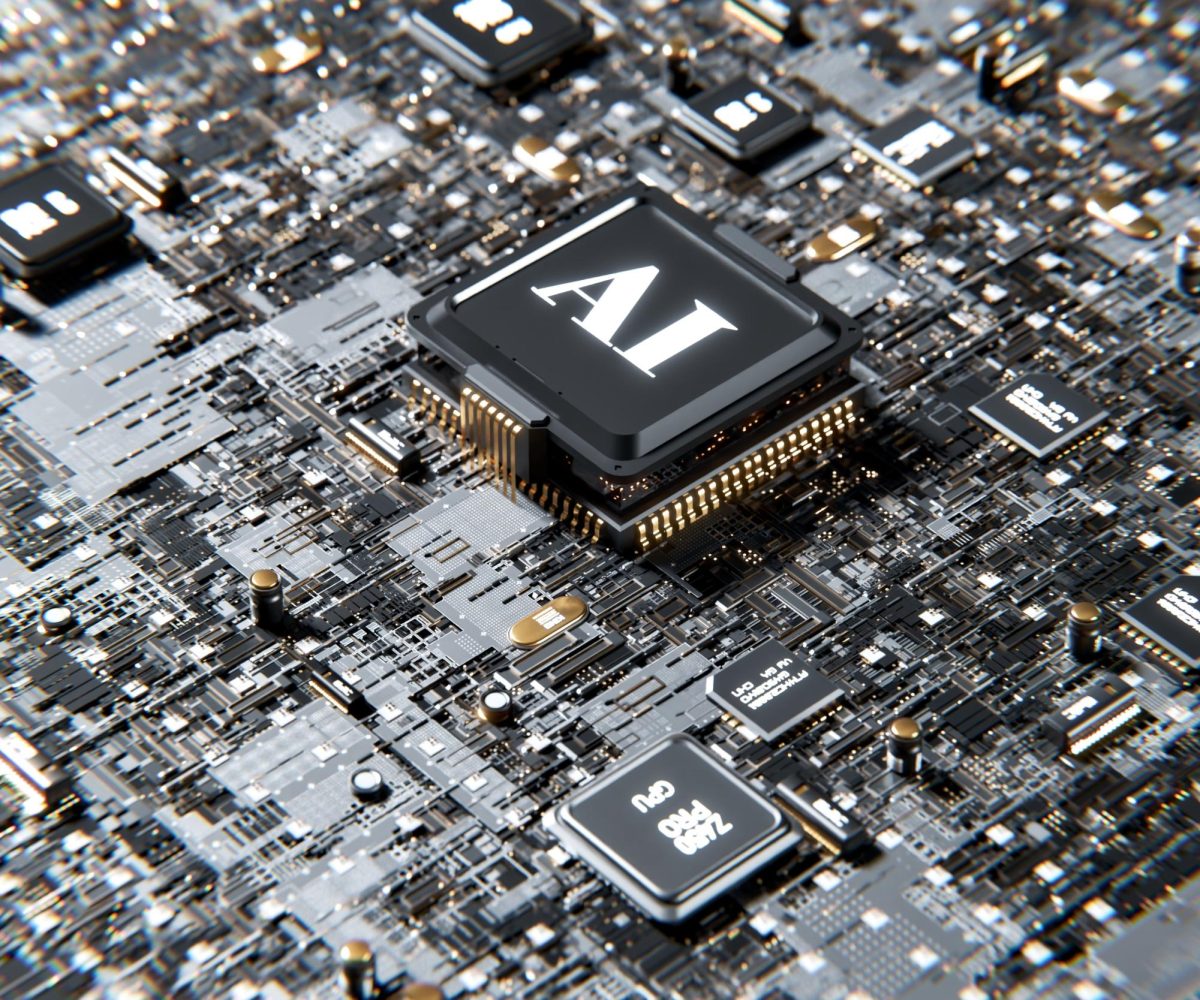In 1980, a computer system named XCON appeared available for sale on the business market. After years of idea throwing, planning, and programming, XCON was sold on tech markets to assist ordering computer systems based on the customers needs and wants. This was the start of the Artificial Intelligence (AI) revolution. As technology advanced, the technology industry’s fascination with computer systems and robots led to advancements in communication systems, Java Coding, and chatbots.
In the digital age, AI is found throughout our daily lives, such as one’s Instagram feed, the Face ID to open a phone, Amazon’s Alexa, Modern GPS systems, and more, according to Forbes. On average, 27% of Americans use computer systems or technological inventions that rely solely on AI several times a day (Pew Research). AI is also commonly used in the modern-day workplace, from spam filters to security surveillance. Small businesses and corporations alike can be found using a variety of technological tools to smooth the general administration of the company and increase profit. The American workplace finds common use of AI technology. O. Although AI has faced controversy for replacing human jobs or increasing laziness within the American population, AI has been proven to only act as an assistant or support to a given task. AI chatbots or AI-based computer systems cannot perform actual full-time jobs as the computer systems can only perform basic tasks, such as organizing, planning, and curating data.
The increasing introduction of AI into the workplace and domestic life, has had many positive effects. A study performed by Forbes on customer service assistants noticed that with the use of AI, 14% more of customer issues were resolved per hour than without the use of an AI assistant.. Parents found that using AI to create their grocery lists and help them meal plan for the week allowed them to spend more time with their families and leave the tedious work to the computer. AI has not been properly studied to find a proper statistic on how it affects home life productivity; however, it has
With the ability to use a computer to solve a task, many people have begun using them in unpermitted ways to solve the problem of dealing with school work, reports, presentations, etc. On average, 56% of students have cheated in school using AI. AI has been commanded to generate essays, projects, or other homework assignments, according to a study performed by Best Colleges. According to the Harvard Business Law Review, intellectual protection property laws are expanding to criminalize the use of AI in the generation of art, songs, literature, photography, etc. AI copyright laws require AI developers to work under a “Fair Use Doctrine.” Under the Doctrine, if a project is AI generated, it will be up to interpretation in a court of law. It is recommended to not generate any forms of work and submit them as original content to avoid criminal accusations.
Even though many users of AI have used it to plagiarize work and violate overall usage laws, a majority of the population who uses it follows all rules and advocates for AI’s involvement in basic computer tasks. According to studies performed by Mckinsey & Company, the 15% increase in corporate production rates and the ability to help parents plan their grocery list for the week makes the easiest tasks done within a couple minutes or less. The constant improvement and development of AI technology and the increasing availability helps other people figure out new ways to utilize AI in their lives. The 2020 decade sure has seen a surge in AI, but it’s just the beginning of the Artificial Intelligence revolution.






